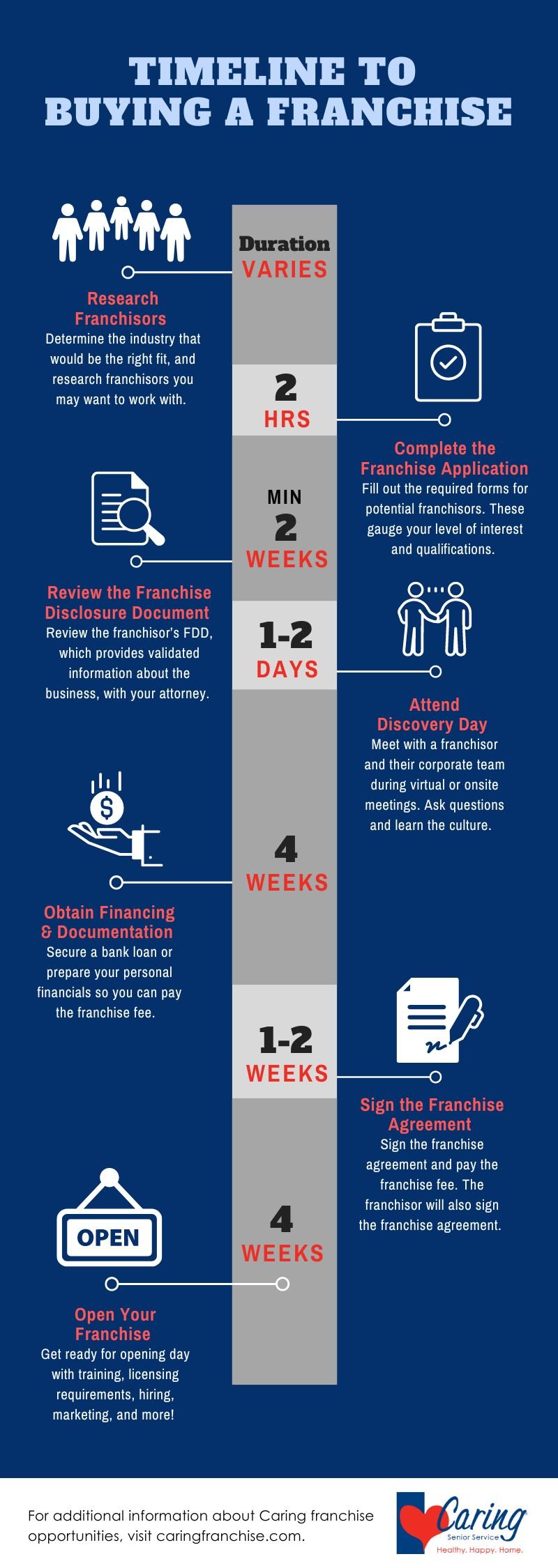Breaking Down the Costs of Franchise Ownership
When considering investing in a franchise, it’s essential to understand the typical costs associated with buying and owning a franchise. The initial investment, ongoing fees, and marketing expenses can vary significantly depending on the franchise model and industry. To make an informed decision, it’s crucial to break down these costs and evaluate their impact on your business.
The initial investment, also known as the upfront cost, is the amount required to purchase the franchise. This can range from a few thousand dollars to several hundred thousand dollars, depending on the franchise. For example, the initial investment for a Subway franchise can be as low as $14,000, while a McDonald’s franchise can require an initial investment of up to $2.2 million.
In addition to the initial investment, franchise owners must also pay ongoing fees, which can include royalties, advertising fees, and technology fees. These fees can range from 4% to 8% of monthly gross sales and are typically paid to the franchisor to support the franchise system. For instance, a Jimmy John’s franchise owner can expect to pay a royalty fee of 6.5% of monthly gross sales.
Marketing expenses are another significant cost associated with franchise ownership. Franchise owners must contribute to the franchisor’s marketing fund, which can range from 2% to 4% of monthly gross sales. This fund is used to support national and local marketing initiatives, which can help drive sales and increase brand awareness.
When evaluating the costs of franchise ownership, it’s essential to consider the potential returns on investment. By understanding the initial investment, ongoing fees, and marketing expenses, you can make an informed decision about whether a particular franchise is a good fit for your business goals and financial situation. Some of the least expensive franchises to own, such as Subway and Jimmy John’s, offer a relatively low initial investment and ongoing fees, making them an attractive option for entrepreneurs with limited capital.
Top Low-Cost Franchise Options Across Various Industries
When it comes to finding the least expensive franchises to own, there are numerous options across various industries. Here are some top low-cost franchise options to consider:
Food franchises are a popular choice for entrepreneurs, and some of the most affordable options include:
- Subway: With an initial investment of around $14,000 to $23,000, Subway is one of the most recognizable fast-food chains in the world.
- Jimmy John’s: This sandwich chain requires an initial investment of approximately $329,500 to $557,500, but offers a unique business model and strong brand recognition.
- Great American Cookies: With an initial investment of around $177,000 to $369,000, Great American Cookies offers a sweet treat to customers and a lucrative business opportunity for franchisees.
Retail franchises are another option for entrepreneurs looking for low-cost opportunities. Some top choices include:
- 7-Eleven: With an initial investment of around $30,000 to $1 million, 7-Eleven is a well-established convenience store chain with a global presence.
- Anytime Fitness: This fitness franchise requires an initial investment of approximately $100,000 to $400,000 and offers a unique business model with a focus on convenience and flexibility.
- Wireless Zone: With an initial investment of around $20,000 to $50,000, Wireless Zone offers a low-cost opportunity to enter the wireless retail industry.
Service-based franchises are also a viable option for entrepreneurs looking for low-cost opportunities. Some top choices include:
- Servpro: With an initial investment of around $40,000 to $150,000, Servpro offers a unique business model focused on disaster restoration and cleaning services.
- Merry Maids: This cleaning franchise requires an initial investment of approximately $20,000 to $100,000 and offers a low-cost opportunity to enter the cleaning industry.
- Home Instead Senior Care: With an initial investment of around $40,000 to $100,000, Home Instead Senior Care offers a low-cost opportunity to enter the senior care industry.
These are just a few examples of the least expensive franchises to own across various industries. When evaluating a low-cost franchise opportunity, it’s essential to consider factors such as the company’s reputation, training and support, and growth potential to ensure a successful business venture.
What to Look for in a Low-Cost Franchise Opportunity
When evaluating a low-cost franchise opportunity, there are several key factors to consider to ensure a successful business venture. Here are some essential elements to look for in a low-cost franchise:
Company Reputation
Research the franchise company’s reputation by reading reviews, asking for references, and checking with the Better Business Bureau. A reputable company will have a proven track record of success and a strong brand identity.
Training and Support
A good low-cost franchise should offer comprehensive training and ongoing support to help you succeed. Look for a franchise that provides initial training, ongoing coaching, and access to a network of experienced franchisees.
Growth Potential
Consider the growth potential of the franchise and the market demand for its products or services. A low-cost franchise with a strong growth potential can provide a higher return on investment and increased profitability.
Financial Transparency
Look for a franchise that provides transparent financial information, including initial investment costs, ongoing fees, and revenue projections. A reputable franchise will be open and honest about its financials and provide you with a clear understanding of what to expect.
Scalability
Consider the scalability of the franchise and whether it can be easily replicated in different locations. A scalable franchise can provide a higher return on investment and increased profitability.
Culture and Values
Research the franchise company’s culture and values to ensure they align with your own. A franchise with a strong culture and values can provide a positive work environment and increased job satisfaction.
By considering these essential elements, you can make an informed decision when selecting a low-cost franchise that meets your business goals and financial situation. Remember to carefully evaluate each franchise opportunity and don’t be afraid to ask questions or seek advice from a franchise expert.
When searching for the least expensive franchises to own, it’s essential to prioritize your business goals and financial situation. By doing your research and carefully evaluating each franchise opportunity, you can find a low-cost franchise that provides a strong potential for growth and profitability.
How to Evaluate the Potential Returns on Investment for a Low-Cost Franchise
Evaluating the potential returns on investment for a low-cost franchise is crucial to making an informed decision. Here are some steps to help you assess the potential returns on investment for a low-cost franchise:
Calculate Revenue
Estimate the potential revenue of the franchise based on industry trends, market demand, and the franchise’s business model. Consider factors such as average sales per unit, customer acquisition costs, and pricing strategies.
Calculate Expenses
Calculate the total expenses associated with owning and operating the franchise, including initial investment costs, ongoing fees, marketing expenses, and operational costs. Consider factors such as rent, equipment, inventory, and labor costs.
Calculate Profit Margins
Calculate the profit margins of the franchise by subtracting total expenses from total revenue. Consider factors such as gross profit margin, operating profit margin, and net profit margin.
Create a Comprehensive Business Plan
Create a comprehensive business plan that outlines the franchise’s business model, marketing strategy, financial projections, and operational plan. Consider factors such as market analysis, competitive analysis, and management team.
Create Financial Projections
Create financial projections that outline the franchise’s potential revenue, expenses, and profit margins over a specific period. Consider factors such as cash flow projections, balance sheet projections, and income statement projections.
By following these steps, you can evaluate the potential returns on investment for a low-cost franchise and make an informed decision. Remember to consider multiple scenarios and sensitivity analyses to account for potential risks and uncertainties.
When evaluating the least expensive franchises to own, it’s essential to consider the potential returns on investment and create a comprehensive business plan and financial projections. By doing so, you can make an informed decision and increase your chances of success.
Some popular tools and resources for evaluating the potential returns on investment for a low-cost franchise include:
- Franchise disclosure documents (FDDs)
- Financial statements and reports
- Industry research and market analysis
- Franchise consulting services
- Business planning software and templates
By utilizing these tools and resources, you can gain a better understanding of the potential returns on investment for a low-cost franchise and make an informed decision.
Financing Options for Low-Cost Franchises
Financing a low-cost franchise can be a challenging task, but there are several options available to help you get started. Here are some of the most common financing options for low-cost franchises:
Loans
Loans are a popular financing option for low-cost franchises. You can apply for a loan from a bank, credit union, or online lender. The loan amount and interest rate will depend on your credit score, business plan, and financial situation.
Grants
Grants are a type of financing that does not require repayment. They are often provided by government agencies, non-profit organizations, and private foundations. Grants can be used to fund a variety of business expenses, including startup costs, equipment, and marketing.
Crowdfunding
Crowdfunding is a financing option that allows you to raise money from a large number of people, typically through an online platform. You can use crowdfunding to raise money for a variety of business expenses, including startup costs, equipment, and marketing.
Franchise Financing
Some franchises offer financing options to their franchisees. This can include loans, grants, or other forms of financing. Franchise financing can be a good option if you are having trouble securing financing through other means.
Small Business Administration (SBA) Loans
SBA loans are a type of loan that is guaranteed by the Small Business Administration. They are designed to help small businesses, including franchises, secure financing. SBA loans have favorable terms, including low interest rates and long repayment periods.
When considering financing options for a low-cost franchise, it’s essential to evaluate the pros and cons of each option. Consider factors such as interest rates, repayment terms, and fees. It’s also important to create a comprehensive business plan and financial projections to help you secure financing.
Some popular financing options for the least expensive franchises to own include:
- Franchise financing
- SBA loans
- Crowdfunding
- Grants
- Loans from banks and credit unions
By considering these financing options, you can find the best way to fund your low-cost franchise and achieve your business goals.
Success Stories from Low-Cost Franchise
Success Stories from Low-Cost Franchise Owners
Many entrepreneurs have found success with low-cost franchises, achieving their business goals and realizing their dreams. Here are some inspiring stories from owners of low-cost franchises:
Subway Franchise Owner
John, a Subway franchise owner, invested $14,000 in his business and was able to generate $250,000 in annual sales. He attributes his success to the strong brand recognition and support from the franchisor.
Jimmy John’s Franchise Owner
Success Stories from Low-Cost Franchise Owners
Many entrepreneurs have found success with low-cost franchises, achieving their business goals and realizing their dreams. Here are some inspiring stories from owners of low-cost franchises:
Subway Franchise Owner
John, a Subway franchise owner, invested $14,000 in his business and was able to generate $250,000 in annual sales. He attributes his success to the strong brand recognition and support from the franchisor.
Jimmy John’s Franchise Owner
Jane, a





